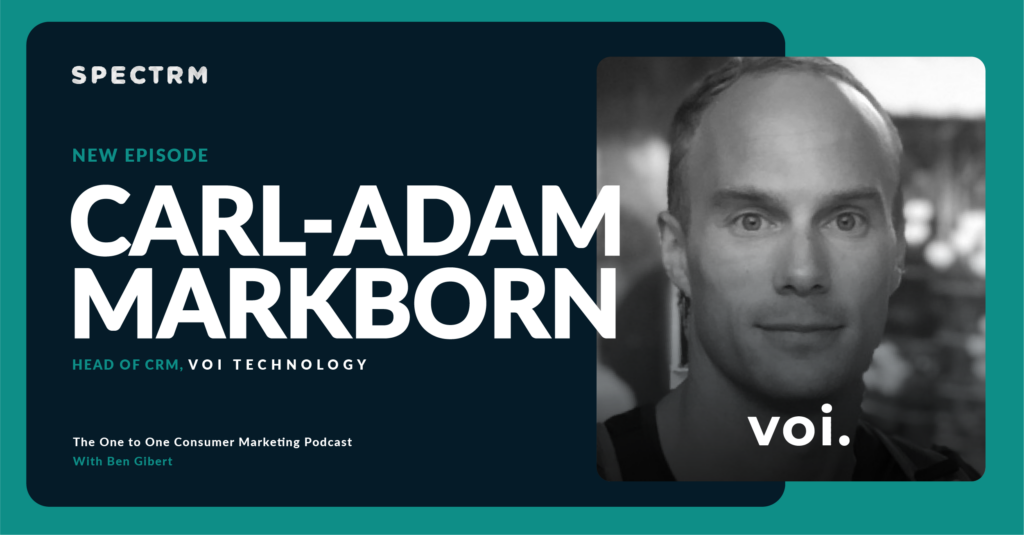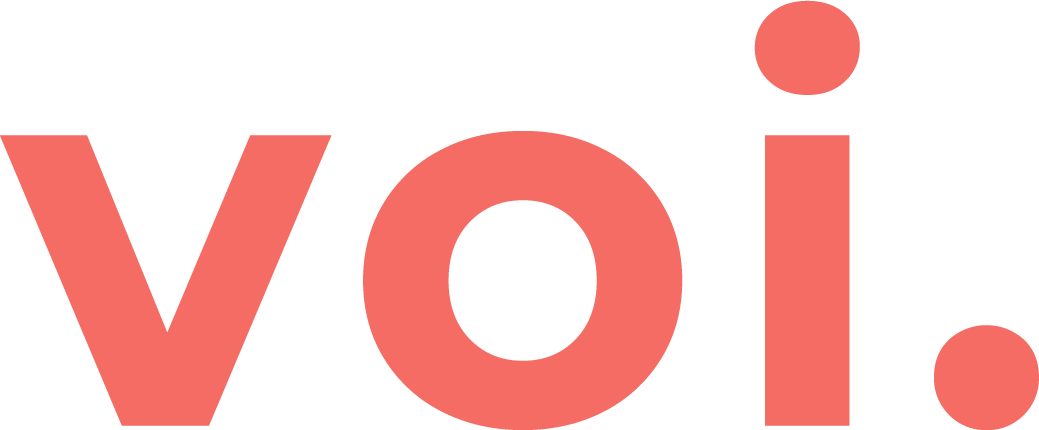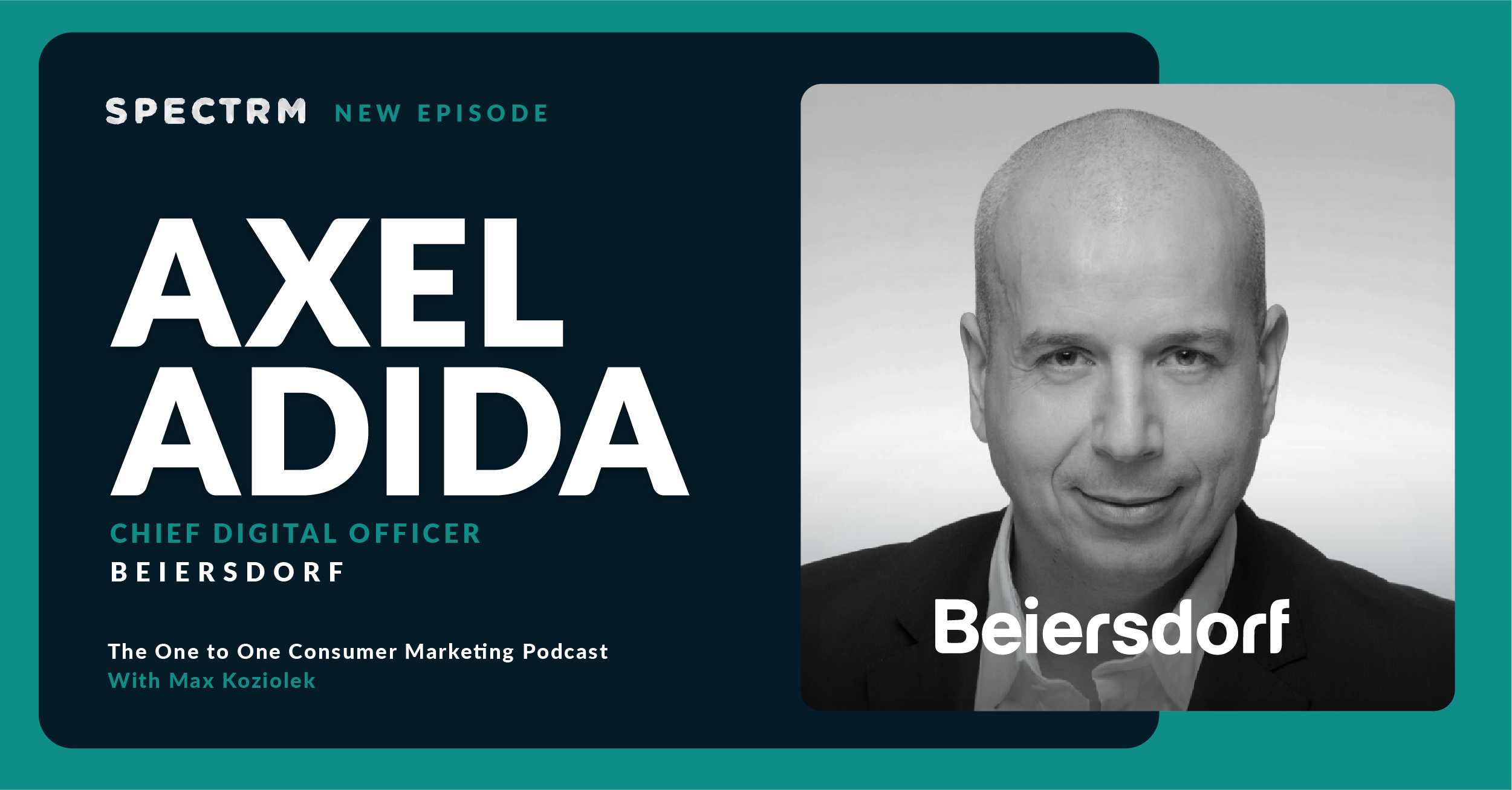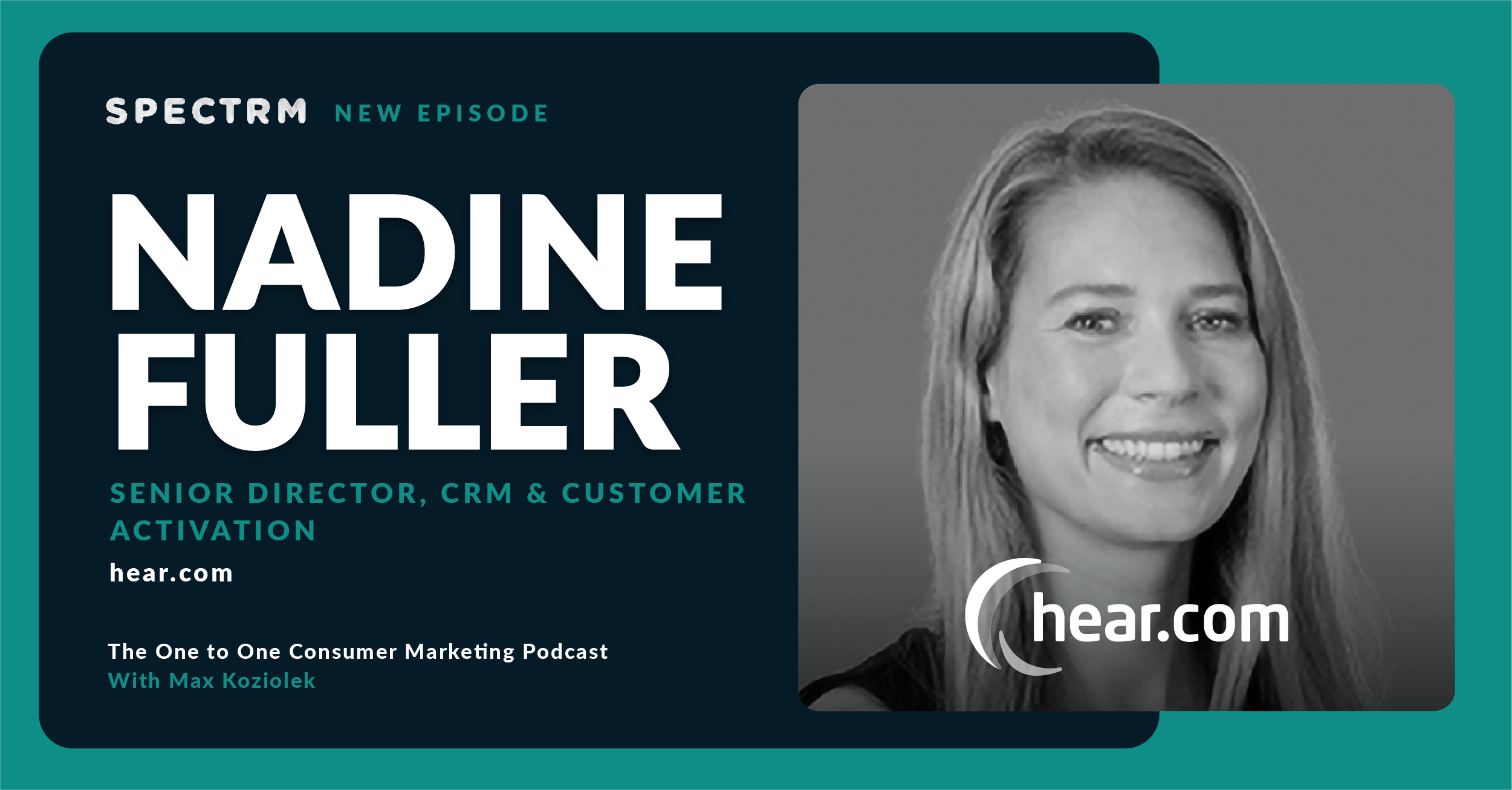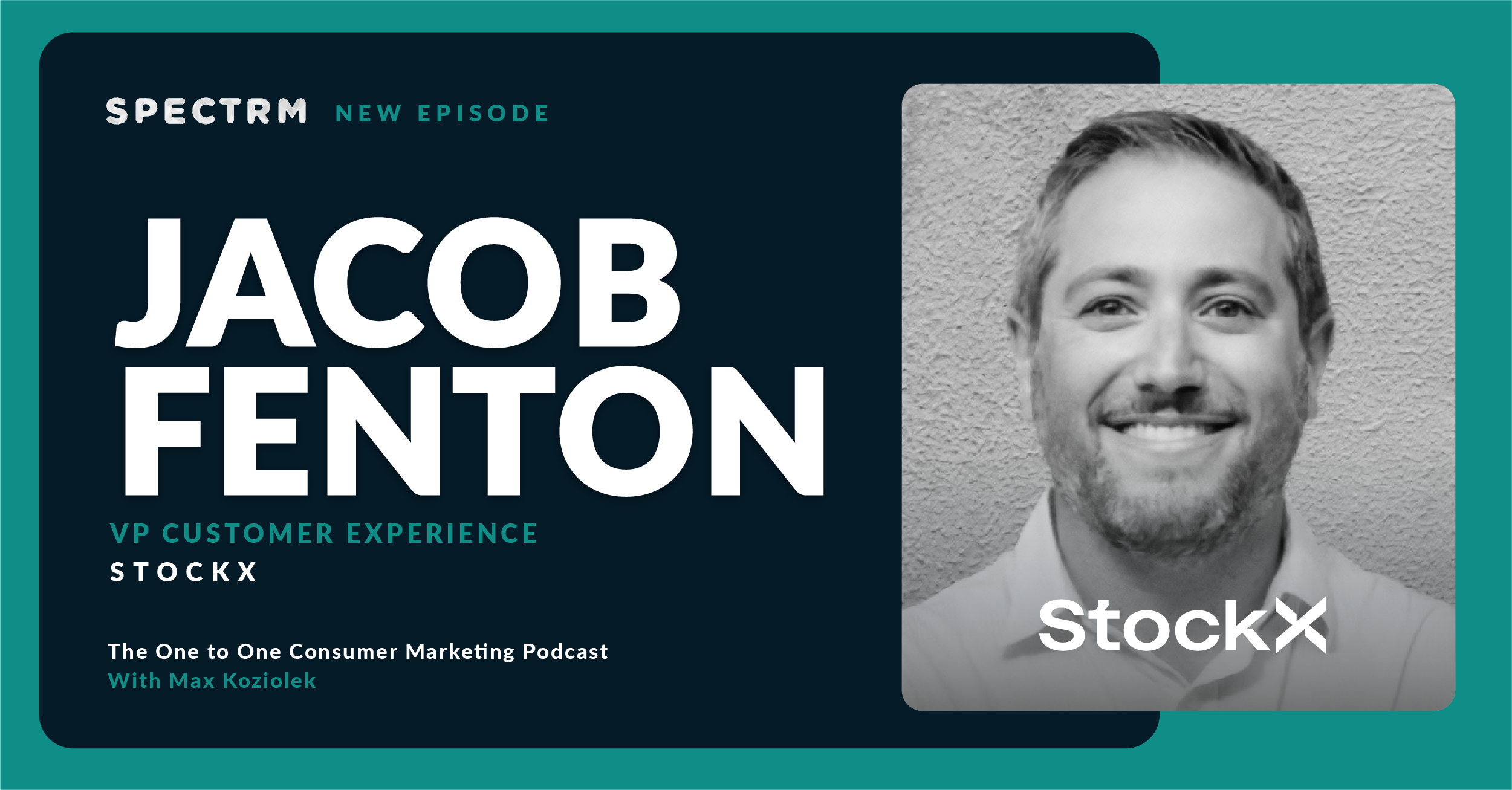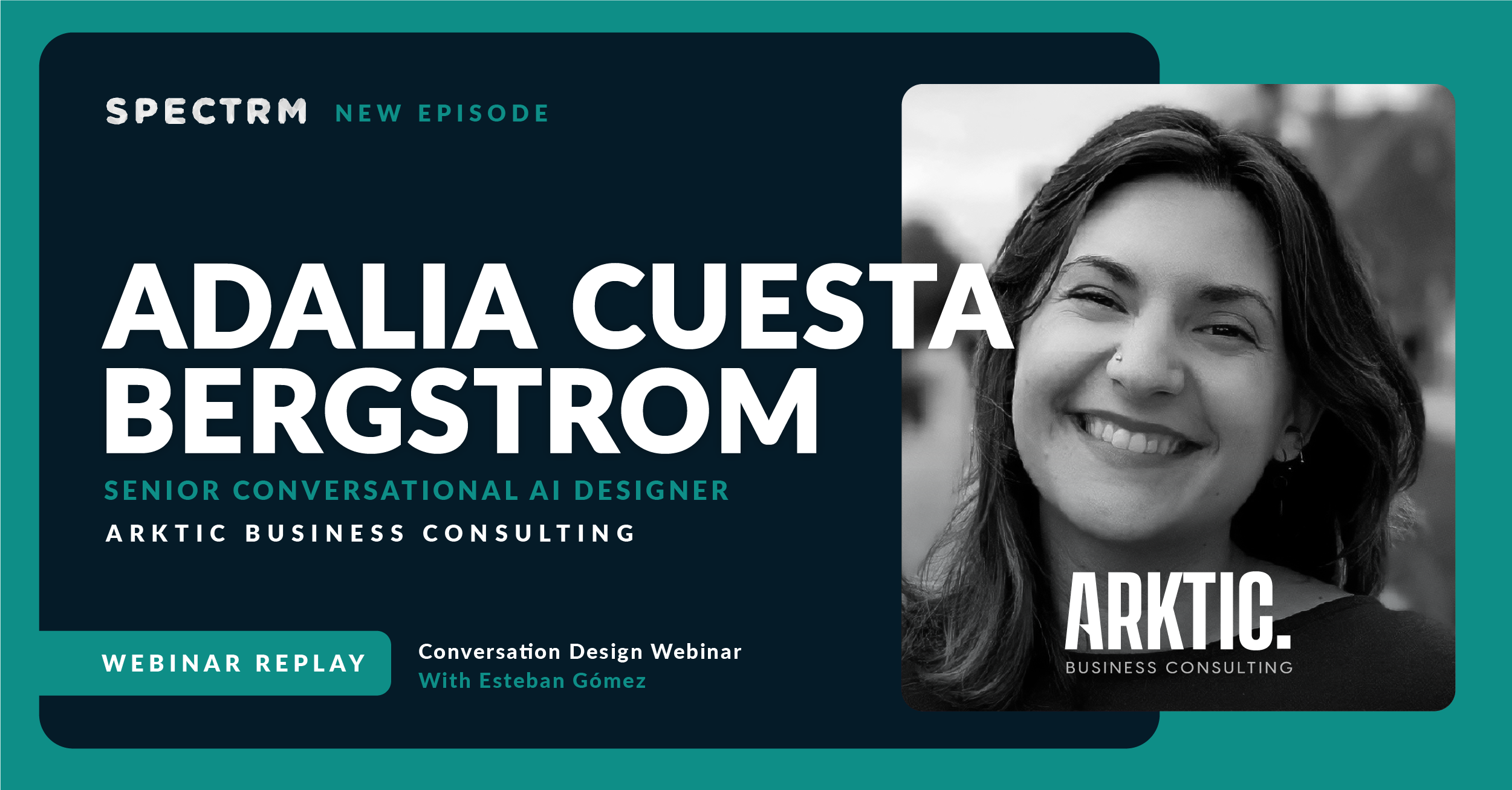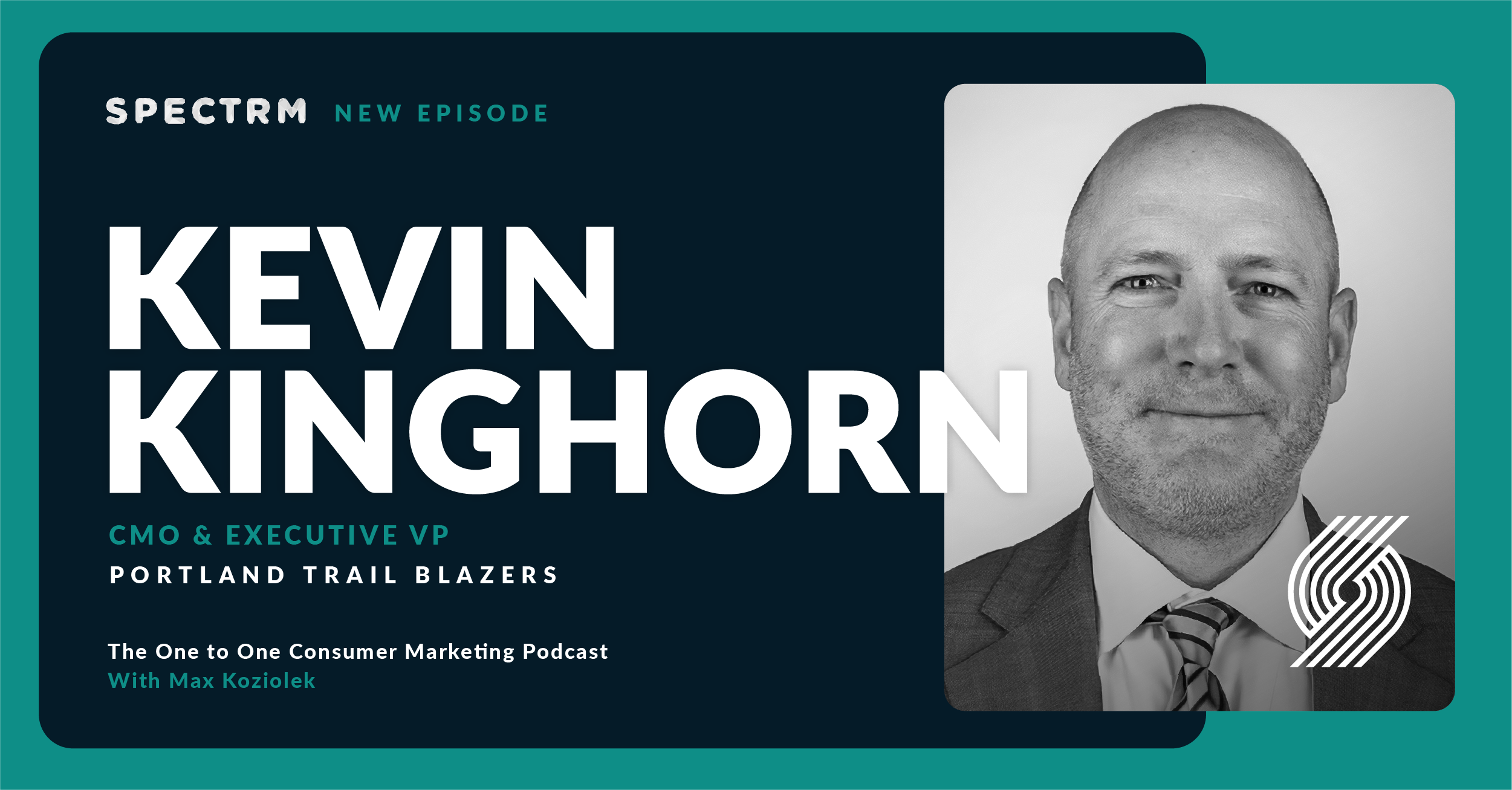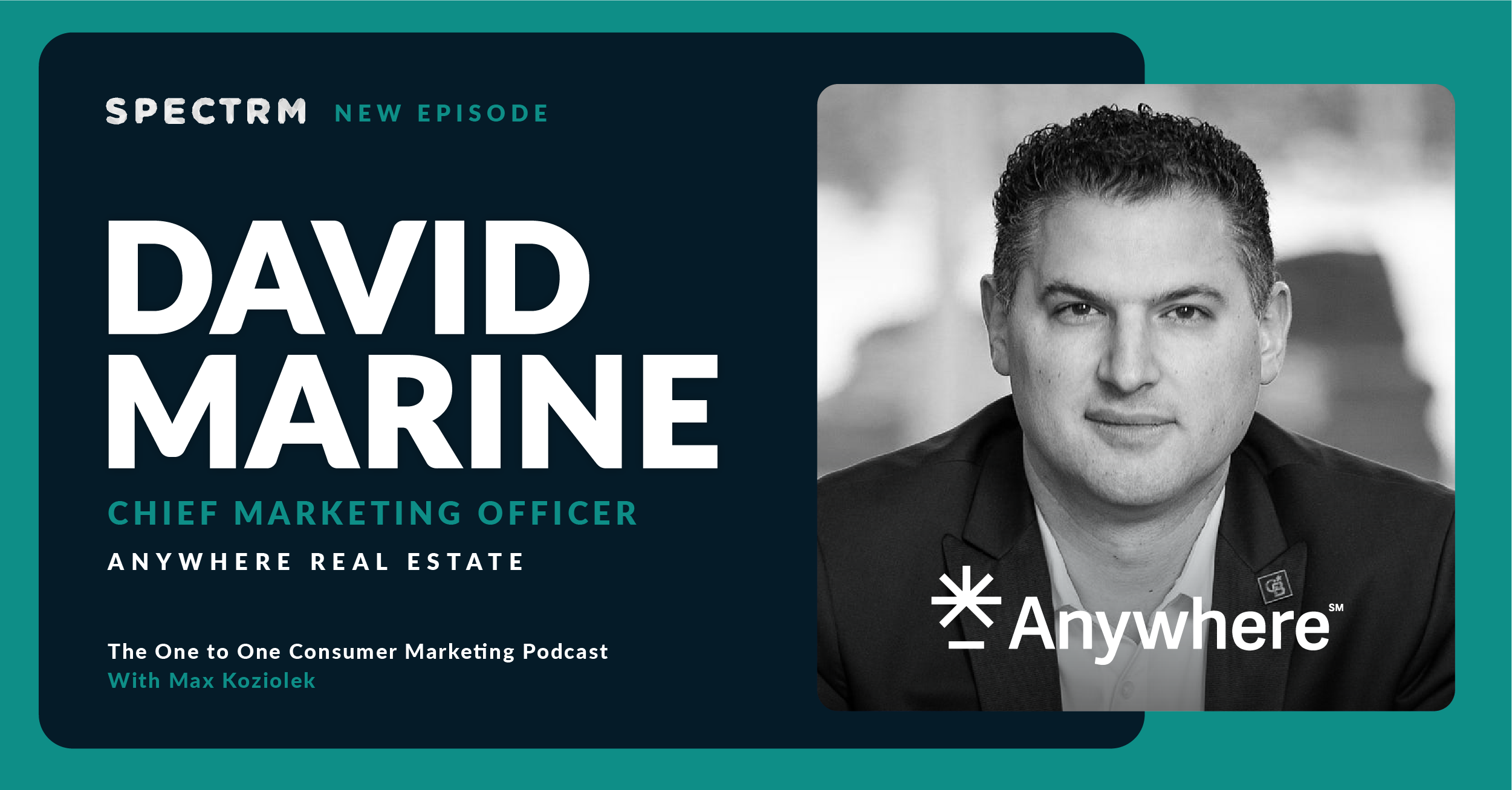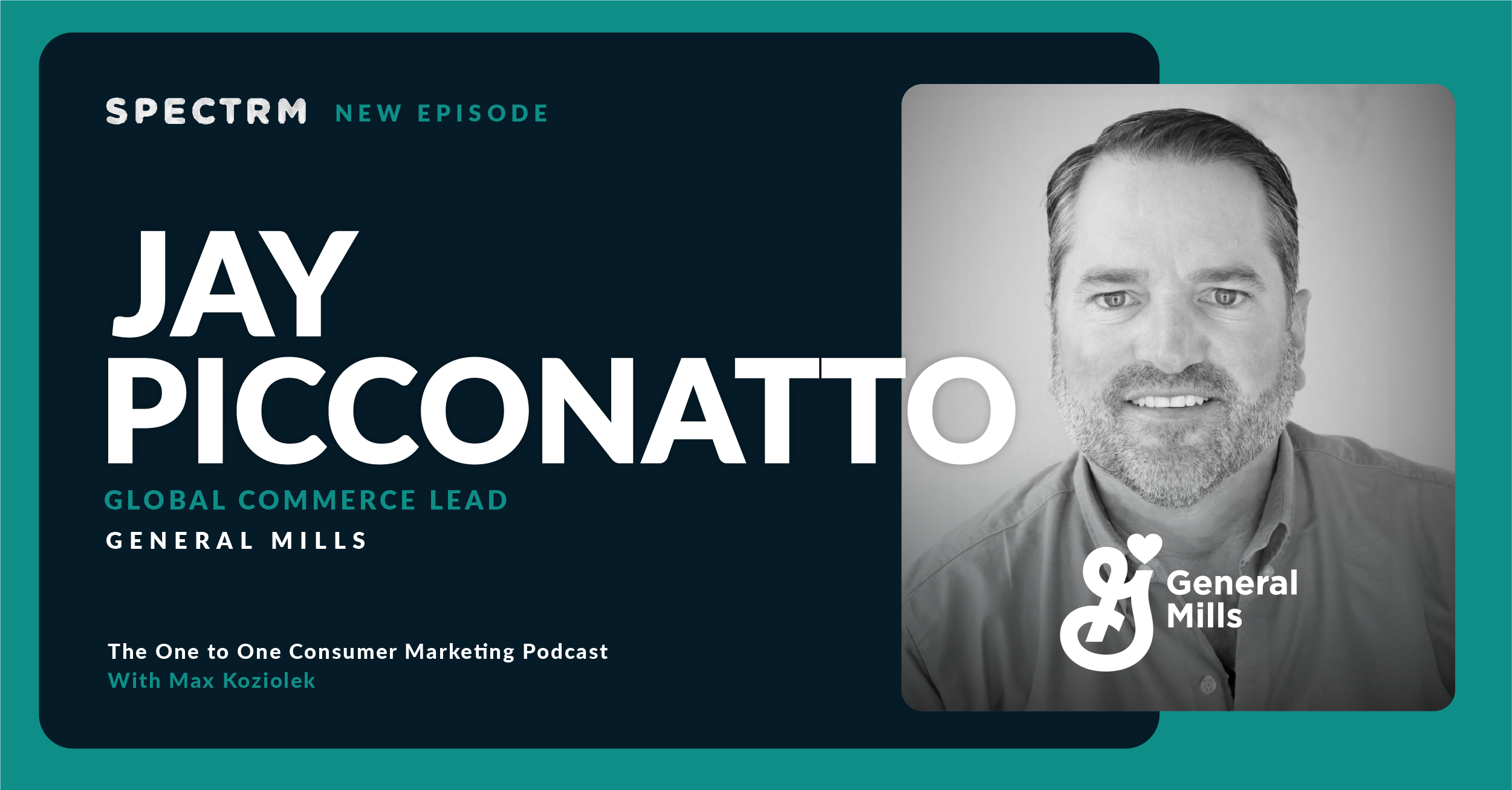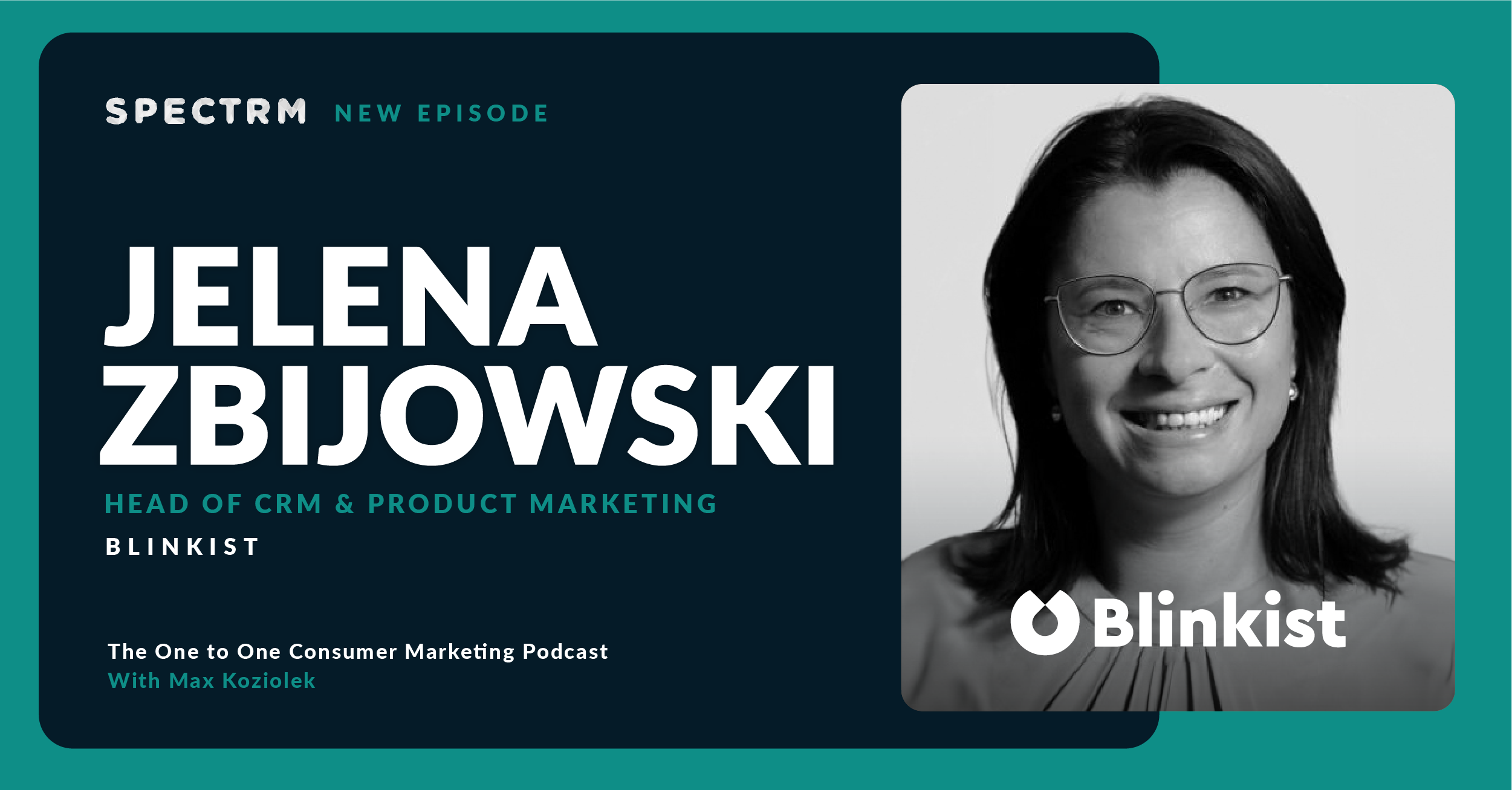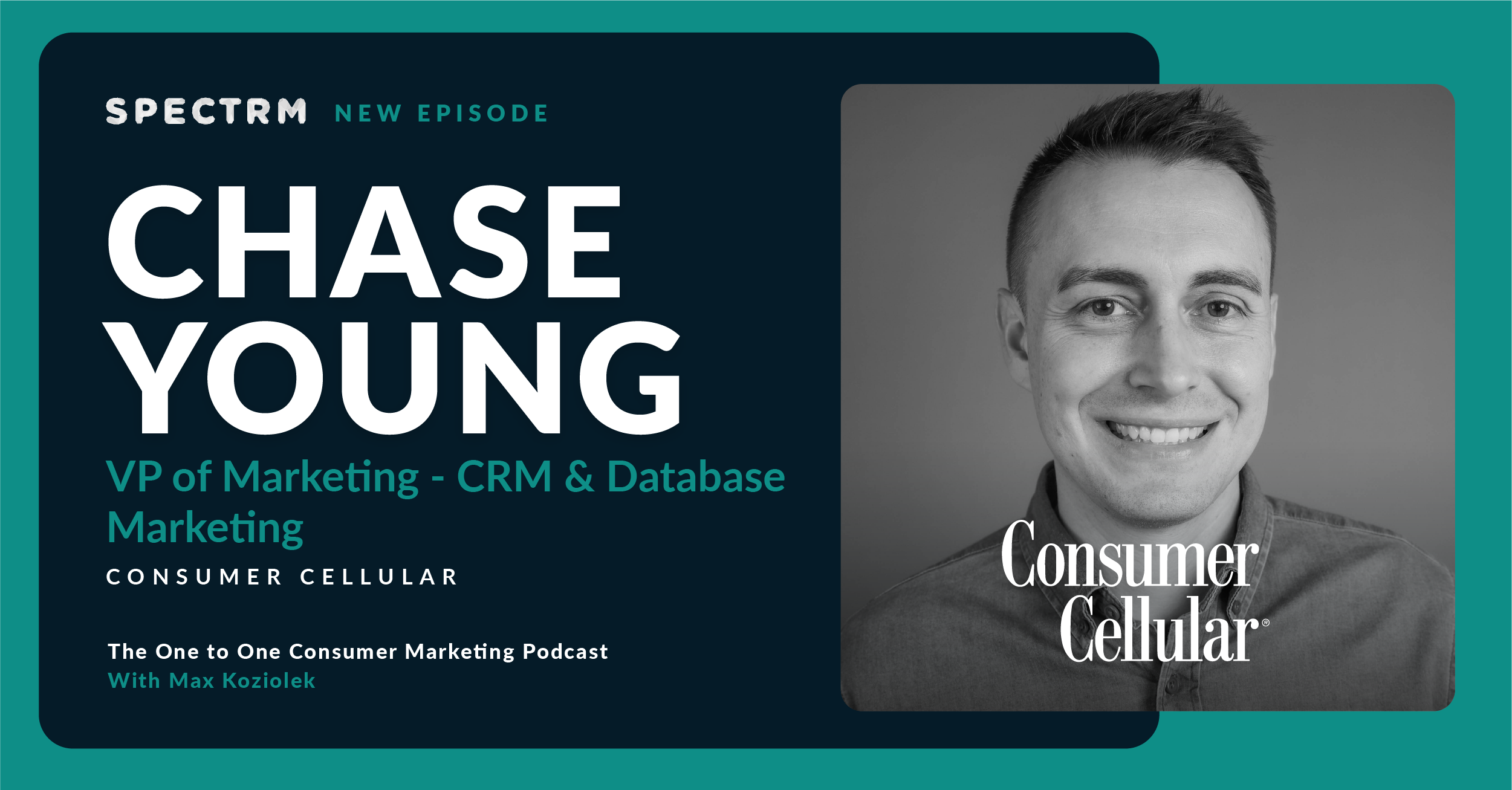Summary
In this episode of the One to One Consumer Marketing Podcast, Ben Gibert interviews Carl-Adam Markborn, the head of CRM at Voi Technology, a micro mobility startup based in Stockholm, Sweden.
Ben and Carl discuss the challenges of engaging users through multiple channels and the declining effectiveness of email marketing, the importance of customer retention and lifecycle marketing in the digital age, the need to tailor content and segment users, and the technology stack for personalized user journeys at scale.
Topics discussed
- The challenges of engaging users through multiple channels and the declining effectiveness of email marketing
- The importance of customer retention and lifecycle marketing in the digital age
- Effective communication strategies for Voi’s CRM team and the role of CRM in micro-mobility startups
- Segmenting users and tailoring content for onboarding and CRM
- The technology stack for personalized user journeys at scale
- KPIs and data analysis tools Carl finds most useful
- The future of CRM marketing and exciting trends and technologies in the field
- User engagement strategies and the importance of understanding control groups and incremental lift to improve performance and customer journey
- Carl’s advice for consumer marketers, including the importance of experimentation, statistics, and research
I think for us as marketers, it's really a big shift where we need to make sure that we don't become one of ‘those brands’ and we make sure the users feel like there is some sort of upside for them to engage with us.
Guest biography

- Data-driven marketer with speciality in CRM, marketing automation and MarTech. I help companies increase successful onboarding, drive user activity, sales and build loyalty while creating long term relationships with their customers.
Company overview
At Voi, we use innovation and creative thinking to design the solutions of tomorrow – today. By offering a radically new approach to urban mobility, we revolutionise the way people move around, for greener cities and healthier communities, fueled by passion.
Industry: mobility | www.voi.com
Subscribe to the podcast newsletter
Transcript
00:03
Ben Gibert
Hey everyone, and thanks for listening to and watching The One to One Consumer Marketing Podcast. Today I’m speaking with Carl-Adam Markborn who is head of CRM at Voi Technology, a micro mobility startup that provides scooters for last mile transcription. Carl-Adam, thanks so much for joining me today.
00:21
Carl-Adam Markborn
Thank you very much for having me.
00:24
Ben Gibert
Yeah, it’s a pleasure to have you here. Can you tell our listeners just where you’re joining from? Maybe paint a little picture of what it looks like there?
00:32
Carl-Adam Markborn
Yeah, so I’m joining from Stockholm in Sweden, northern Europe where I work at Voi Technology which is a micro mobility company and we are primarily working with electrical scooters and bikes. Currently we have a pretty good snow landscape here. It’s not optimal scooter businesses in Sweden at least. Yeah, that’s the way it is out here outside my window at least.
01:04
Ben Gibert
Yeah, I was just saying before we started that I’m a little jealous we haven’t had much snow in Brooklyn and no snowboarding for me to speak of. Let’s focus on what’s going on at Voi and in your current role as head of CRM before we kind of get started and talking about more things related to that, can you give us just of background on yourself, how you ended up in your current role?
01:30
Carl-Adam Markborn
Yeah, sure. I started working in CRM early 2014 when CRM was something like completely different where it is now. I mean, you had basically zero marketing automation, people were basically desktop based only smartphones haven’t really breakthrough the noise to get to the users other than just like consume music or media. People didn’t really use the apps a lot back then and you basically ran CRM as an email platform only. I started working for ecommerce back then in 2014 and I basically started from scratch with a big email list and no loyalty programs, no automation, nothing. Learned the foundations of working with CRM and user communication by building both automated programs but also like developing loyalty programs and do more like an upselling and cross selling that is not like the spray and pray weekly blast, but more like targeting users and present both offers that they are interested in, but also which type of frequency they prefer in their communication.
02:57
Carl-Adam Markborn
For the past few years I’ve been working in different CRM roles and I’ve been working in mainly fintech and ecom. I’m currently at Voi Technology since two years back and we have quite a large operation across Europe with e-scooters and e-bikes, and we have gone on a journey from having many scattered teams all across Europe to now have centralized into one main strong HQ functionality that supports the local markets instead of having autonomous teams located outside in Europe. My team leads all the user communication to all our users throughout the user journey from their first account created and to everything that happens through their lifecycle. Really nice.
03:59
Ben Gibert
Thank you for that overview that touches on so many things that I would ask and that we’ll probably get into later as well. So, yeah, it’s great to get that initial overview. Thinking about just the general state you mentioned, the transition from just kind of email blasts into a much more orchestrated multichannel approach that you’re operating now at Voi. Can you talk about how you see the current state of consumer marketing today and maybe how that’s changed?
04:31
Carl-Adam Markborn
I think that many professionals within the industry would say that it’s a big challenge today, going out and reaching through the noise that is there’s a lot of people feeling that you get less and less attention span from the user. It’s just hard to feel that you’re relevant and people want to consume either your content or your offers or just give your app some time. For instance. I think we have transitioned through a period where if you are an ecom, for instance, that do your large blasts, you will of course drive both engagement and revenue, but in a declining scale. You onboard users, you get them to purchase their first product, they become a part of your weekly or monthly blast routine, and you get one to two interactions with them where they are actually interested because they had a positive experience at first, but then that interest declines further and further.
05:37
Carl-Adam Markborn
If you’re only like a traditional desktop or web based only and you don’t have an app, you’re going to see less and less interactions. I think as yourself, as a normal consumer, if you just go into your email inbox and you check the campaign tab, you’re going to have quite a few of those there standing up that you have absolutely no intent to interact with. I think for us as marketers, it’s really like big shift where we need to make sure that we don’t become one of those brands and we make sure that the user feel like there is some upside for them to engage with us.
06:21
Ben Gibert
Yeah, I think you summarize that so well, right? I mean, personally, I can tell you that I don’t even look in the promotions tab of my email inbox anymore because I have thousands of emails there that are unread. I practice inbox zero, but in my promotions tab, that’s just no longer possible. I ignore it for the sake of my sanity. You touched on also this concept of which I’ll paraphrase into kind of diminishing returns to email, right? Because of the fact that it is this one way blast that isn’t ultimately adding value for users, which is a big problem if you’re trying to do the things that most CRM marketers are that most marketers are, which is get through the noise get through all of the noise that exists in today’s environment and in digital channels in particular. This probably touches and how you summarize the state of consumer marketing.
07:16
Ben Gibert
Can you tell us how you think about customer retention and lifecycle marketing given all of these changes?
07:26
Carl-Adam Markborn
Many companies have a larger reach if they would engage more of their channels. Really? Email is in some people’s eyes, they say that email is dead. It’s not dead, not at all. It’s just that it can’t be abused the way it has been historically. Leveraging email, but in combination with if you have an app or if you have a possibility to target users outside the email only channel, that is, I think, something that is very relevant currently in the industry, making sure that you don’t blast people on and on, but make sure that you have a sense of the policy. You get them to be opted out by themselves if they don’t want to engage anymore and said, okay, I have a user who is interested in my content, but they just don’t want to engage through email. Which other channels can I use to communicate with them on their terms, where they feel that they can still engage, they can still purchase, they can still consume content or use your service.
08:45
Carl-Adam Markborn
In my daily work currently, I think that we have an app as our main tool to communicate to our users. That’s also where we see the best interaction. People don’t go to our app to consume content as if there would be content creators. They want to get from A to B, really. For us as a CRM team, it is really relevant for us to be communicating to the users when they are about to use our service. If they are morning commuters, it might be relevant for us to communicate to them the evening or afternoon before they’re going to take their morning commute or earlier in the morning when they’re having their cup of coffee before going to one of our vehicles. Email can definitely be used in those circumstances, or the app, of course, but just having the big campaign blast that were like the status quo for many years, I think is counterproductive in many ways.
09:51
Carl-Adam Markborn
You get people to become disengaged with your brand.
09:55
Ben Gibert
Yeah, absolutely. It’s about providing that value. I mean, you mentioned commuters as well. I’m assuming you have these kind of segments or cohorts within your CRM that you’ve identified as different transport types and then you’re engaging them kind of accordingly. How can you walk us through what that looks like for Voi? The ways that you do that, and you gave the commuter example, but then, for example, what would be the message that you would send them? Or how do you add value to bring them back into Voi?
10:27
Carl-Adam Markborn
Everybody uses transportation as a part of their everyday life. At Voi we see that we want to make cities made for living, removing pollution and removing like cars that clutter the streets in the city. In general, people tend to use our ways of communication to replace car trips and taking the last mile transportation instead of grabbing a cab from the central station. You can take a scooter if you are low on time. For us as CRM team, it has been crucial to identify is this a person who is regularly riding a lot during the afternoons and what would that imply on their behavior? That is probably an afternoon commuter on their way back from work. At the same time we find that we can segment users and approach them with different type offers really that are suitable for their needs. If they are a morning commuter, we know that they do take the rides in the morning and we can target them even on an early morning with a multiple discount offer where it would be instead of taking just one ride, you want to take three shorter rides.
11:55
Carl-Adam Markborn
At the same time we have a big group who are just weekend riders where it’s quite clear that they are only interested in riding during the weekend when they go to exploring their city or going with some friends and they go out and they ride a lot during Saturday and Sunday only.
12:18
Ben Gibert
Okay, so it sounds like you use a lot of those kind of triggers in terms of the frequency of their riding and the time of day of their riding as a way to segment them and then you’re building value based on that. I mean, that makes perfect sense in the mobility sector as well. It’s like a very kind of clear use case, maybe taking a step back, you mentioned that you used to have local markets, that you’ve become a global or kind of headquarter team and CRM is serving multiple local markets. Now. Can you talk about how CRM fits into your company and kind of your marketing team strategy more broadly and maybe how that’s shifted with this change?
13:00
Carl-Adam Markborn
I think the industry in general for micro mobility is that we have a very unique product that stands out in the streets and people tend to see us when they are walking around in their city or in a city where they come to. Our strongest acquisition tool is our vehicles. Actually people see them, they know that this can get me from A to B and it’s very easy for them to onboard and start using the service. There’s of course regional differences between like do you have to have your driver’s license uploaded or there could be age limits for certain regions as well. In general, CRM is a very strong contributor to our business due to the fact that there’s so many unique things in every city. We’re operating in so many cities around the European continent where there are a lot of rules that we need to be able to communicate to the users clearly, and they need to consume that content and make sure that they park accordingly for not just us as a company to function, but also for the city that we operate in to be happy with our service.
14:19
Carl-Adam Markborn
It’s really important for us early on in the onboarding to segment the users based on exactly where they are and tailor that content to those specific city and traffic rules. Really that is one of our main objectives early on in the user lifecycle.
14:37
Ben Gibert
Okay, so it sounds almost like it’s not just a business critical function in terms of getting more revenue from customers, but actually in terms of protecting the company from regulation, from potential backlash, in terms of the way that people even use your service. Would that be fair?
14:53
Carl-Adam Markborn
I would think that would be quite fair to say. I think we’re very considerate to our partners, really, the cities where we operate in. Also CRM is a very important tool that brings in a lot of extra revenue. We make sure that we bring users faster through the onboarding journey and we try to identify users who have both troubles getting through the onboarding or getting through the first few rides that might be a bit challenging, where you don’t know how to ride, how to park, like how to use the vehicle itself. We’re trying to be very educative and seeing that we help users getting through the first parts of their time with us, really and getting to the magic a-ha moment when they feel like, okay, I get the hang of this, really. After that it’s a lot about being having an always on presence with them in the app, using the app as the main channel and communicating both relevant offers but also things that could be related to traffic.
16:00
Carl-Adam Markborn
There could be transportation strikes, there’s a whole arrange of things and not only the regular things. It could be also from a legal perspective that we have changed rules that you need to opt in for increased usage of helmets in a region. For instance. There’s kind of big use for CRM in our business spanning through the entire user journey, not only like pure growth related or cross and upselling as it would be in more traditional ecommerce, for instance.
16:37
Ben Gibert
Yeah, and I think as you mentioned to that use case, the acquisition that the majority of people will just see you in the streets, see a scooter in the streets and go up to it. I think that’s such a powerful acquisition channel. CRM becomes an even more important part of that. If I can think of Spectrm is headquartered in Berlin and Berlin there’s tons of micro mobility scooter startups and if I think through like when I go there for work and I use a scooter quickly, if someone actually provided that if there was that type of experience too, where I really got a lot of help. There was something specific to my journey, educating me, telling me about things in that area. I would choose you over a competitor. I think that’s also the role that CRM can really play there. It sounds like it’s a very key function in your business, even more so than in some other verticals where acquisition might play an even larger role in terms of generating revenue, in terms of kind of how you’re engaging people.
17:34
Ben Gibert
You mentioned email, you mentioned app. Are there any other channels that you’re using as a CRM team and kind of which ones are you seeing work best outside of the app?
17:44
Carl-Adam Markborn
We have done some experiments with social channels and we have found that to work okay to bring out the message that we want to bring out. We have tried to reverse it, really, and try to bring social into the app rather than bringing the app out to the social. What we’ve done is that we have a really good social media team since we’re very local presence business where we are on the ground in your city. So, for instance, we have done lots of city guides and where do you find the best cinnamon buns, for instance? Those are all based on social mainly. We’ve lifted those into the app and used our CRM system to make it feel like you’re browsing in that page by using the content from the social instead. Getting the social feeling, but keeping it in the app and not like moving you outside of the app, but engaging users in the app with things that they might feel relevant.
18:55
Carl-Adam Markborn
That is not necessarily a discount or an offer or some great transactional email about regulation, but just like getting them there and giving you the ten best places to visit this weekend in Berlin, for instance. That’s been a really nice function.
19:13
Ben Gibert
Nice. I love that. It reminds me of kind of the OG, kind of the Michelin star restaurants and Michelin using that as ways to get people to drive more. It’s exactly that kind of thing. I can see that working very well in that vertical. Another part that you mentioned was obviously app drives a lot of engagement. You have a lot of competition. What happens? Do you have any ways of do you have any kind of win back campaigns? Anything that you do to try to get customers back that either have uninstalled the app or where you see a lack of engagement, they’re not a regular user.
19:47
Carl-Adam Markborn
Yeah, so we have a whole bunch of automations built really on getting the user to not really forget that we exist or making sure that if they haven’t taken a ride that they could come back and get a discount. We’re constantly A/B, testing everything and moving things around in the timelines. What is the best timing for you as a medium frequency user in a city in United Kingdom, for instance, compared to a person in city in Norway and seeing like where is the sweet spot for getting you back to exploring your city with one of our scooters? Is it 21 days? Is it 30 days? There’s just a lot of testing going on constantly on that and testing both the offers but also testing the timing. Of course, if we have marketing permission, we can still try to get users to come back even if they have uninstalled our app, which can be quite successful.
20:59
Carl-Adam Markborn
It’s not necessarily that they wanted to uninstall, it could be they can have changes devices or it could be for like iOS have uninstalled the app due to inactivity. There’s a whole bunch of reasons for them becoming inactive, but it might not be that they just decided to stop. We talked about the whole bus out there. I mean, if you get 5 seconds of time with your customer, you should be really happy for that time. Just really trying to be on top of their mind whenever they decide to use the micro mobility as transport again.
21:37
Ben Gibert
Yeah, and that is like inherently a very you mentioned location, time, particular use case for that customer. There’s all of these different variables that play into what you’re doing to personalize that scale to make it relevant to bring them back into the app. So that’s inherently very complex. Can you talk through like the stack that you’re using in terms of technology to orchestrate journeys at that scale?
22:04
Carl-Adam Markborn
Yeah, so we’re mainly using our marketing automation and CRM tool Braze that we use for all our in-app and email communication which is working really good for us. We are using Snowflake as our data warehouse. We have a direct integration between Snowflake and Braze, which makes it possible for us to leverage more advanced type of data than just exporting events and attributes, but more like building models and making it possible for our data science team to be able to tailor the best user journeys and the user experience not just only driving towards revenue, but also like how they perceive our service and interact with our scooters. If there’s been some mechanical error, for instance, and it just really makes it possible to stitch things together all across the business by having the data warehouse directly integrated to Braze. I would say that is our stack really.
23:16
Carl-Adam Markborn
For analysis we use Tableau and we get all our reports in Tableau supports from our data analytics team. We don’t currently have a CDP or any specific analytics tool tailored for marketers, but given the support we get in the organization, I think that we are in a quite good place actually.
23:43
Ben Gibert
Yeah, that’s great. Thank you for the overview. You mentioned predictive modeling, you mentioned revenue, also perception of your brand. What are kind of the core KPIs for your team? How are you looking at the data either in snowflake or the kind of engagement activity through Braze. Can you walk us through how you’re measuring performance and then the levers that you have to pull to improve it?
24:11
Carl-Adam Markborn
Our KPIs differ depending on what we want to do, really. I mean, if we are talking about pure growth campaigns, the KPI would be uplifting rights compared to our control group. We’re always very centered around control groups and making sure that we use both global control groups but also campaign specific control groups to make sure that we are actually getting a real proper impact. And that’s measurable with significance. Typically it would be uplift in rides. Also it could be things that are really good for our relationship with our city stakeholders that we see wrongly parked scooters or damaged scooters that are getting reported, for instance, that people want to help out and want to be, like, a good community member and helping us out with understanding that, okay, this scooter has either some issues with the brake or the taillight is broken, for instance, and trying to stitch that experience together so the user feel that they are actually, like, they’re having a dialogue with us, not just a monologue.
25:21
Carl-Adam Markborn
We’re talking back and forth to each other, supporting each other.
25:25
Ben Gibert
Yeah, I love that. The kind of two way engagement, measuring how active the community is in terms of also helping you manage the relationship with the other side of your market, which is the city, and then also being measured on uplifting rides, which obviously has a direct impact on your revenue. So very important there. I think we’ve talked a lot about what you’re actively doing in terms of your work at Voi, maybe looking forward, what do you see as the most exciting consumer marketing or CRM marketing trend at the moment or technology that you’re excited about?
26:02
Carl-Adam Markborn
I think we’re seeing a big shift in general in marketing, where both major tech companies are making it difficult for people working within traditional performance marketing to get traceability and make it measuring their ROI. That is driving more. More towards marketing, towards users that you can actually have one to one relationship with instead of having anonymous users in third party apps or third party environments that you can’t measure on. I think that shift is really interesting where I think that marketing automation is going to be even more important for both service providers but also like traditional ecommerce as well. The second thing I think is really interesting currently that is the use of AI and predictions really like, how can you make that one to one relationship with a customer feel not as a binary chat bot, but more like, okay, I do this, then they do this back.
27:21
Carl-Adam Markborn
It becomes more like of a mutual relationship where you consume services or goods from a provider, and they make sure to tailor that experience so it feels authentic and they know that. Okay, you normally ride your scooters on Saturdays, so we’re going to talk to you on Friday afternoon or Saturday morning to prepare you for what’s coming up. We think that you are using our service to this best extent so we should be able to recommend you this type of products. That would be those are the base use cases currently and they can be done without predictions as well. Having that done on a large globally automated scale instead, where you can orchestrate campaigns for tens of different markets in multiple regions, all on different languages, but you provide the user with the best offer with the exact price or the perfect discount that they are requesting for them to get back on track with consuming your service again.
28:32
Carl-Adam Markborn
Decline in performance and increase in predictions, that would be my future outlook.
28:41
Ben Gibert
Yeah, that’s a great summary. Decline in performance and future predictions. I think the company that builds the perfectly predictive engagement tool that sits on kind of all of the data that customers have will be a very rich company I think. Going forward. Looking at your comment about kind of iOS 14 or drops in traceability across different platforms, has that posed real challenges for you at Voi, for the CRM team as well?
29:12
Carl-Adam Markborn
Of course we’re getting impacted by machine openings and email statistics, but in general, I think as a CRM team we’re seeing a lot less impact than if we would be on the performance side. I think we still have a lot of good KPIs to follow and track among our users and seeing their activity and engagement with us. Just seeing fundamental things like sessions or the app opens or navigation events and actually purchases and the rides really I think we are still in a very good place and I think that as long as you respect the user and make sure that you don’t abuse the data that they allow you to be shared. I think that CRM is like line of work or a toolbox for you as an ecommerce or any company really that you can leverage and make huge impact on your user base without really having a big budget for the large external networks.
30:28
Ben Gibert
Yeah, and more protected, as you said, from a lot of the privacy concerns as far as just the tracking across platforms and the amount of signals that you can collect on engagement. You’ve been in CRM for a while, you can see clearly kind of what are the big trends coming down the pipeline for you, what are kind of your top three pieces of advice you would give other consumer marketers or a few things that you wish you knew at the start of your career that you now know.
30:58
Carl-Adam Markborn
I think that there is a big advice like dare, making sure that you dare to experiment and take the chance of if you have tooling that allows you to experiment a lot, just experiment, find a small isolated segment, make sure that you have a proper control group set up. Run a one off ad hoc campaign, see what happens. Evaluate, and if you like the outcome, make it a larger test and then just put it live in automation. Really? You can make sure that it repeats itself and you have done and you have found something really good and you can leverage it across multiple continents and just like doing work once or twice really and just dare to move away from manually executing things week after week. So testing really. My other advice on that would be get really serious about statistics and testing and the fundamentals of statistical analysis and making sure that you are always getting significant result and not things that are just implications.
32:21
Carl-Adam Markborn
Isolate the groups that you’re communicating with, making sure that they don’t get cross communicated from other systems or other campaigns and see that the control group you have set up that there’s a big significance in the uplift of what you’re trying to achieve really. And then like research. Research is I think, the best key learning here. Look at all the suppliers that are out there for marketing automation, CRM systems. Not only those, but like CDPs, the systems that are providing app tracking data for instance. They have great resources and blogs. Also like if you have a supplier for a market automation tool already go through their documentation and read their update emails and their update posts, seeing that you are at the forefront at all time and get to leverage their new functionality and be really at the forefront technically. Because if you don’t do that, somebody else will.
33:27
Ben Gibert
Yeah, all great pieces of advice I think dare to start to implement things, to change things, really. Understanding statistics, I think, is so key because correlation does not imply causation and really understanding your control groups and incremental lift is so key to actually improving iteratively and improving that customer journey for your performance and your last. One as well. I think all great pieces of advice in terms of five years from now, what is the future of consumer marketing look like? No one likes to make predictions but I always force it on everyone at the end of the podcast to see what you’re thinking is coming down the line.
34:14
Carl-Adam Markborn
That’s a tricky one, but I would say that I think we’ve seen a lot of shift in how people communicate in social media the past few years. There’s less and less organic creation in the old platforms and there’s much more activity in the newer platforms and I think that is something that is an early sign towards. What is it for us working with an app or service online or just like a traditional website, for instance, that’s a clear indication of how do people want to consume our content or how do they want to be targeted. Because if you have 200 apps in your phone and everybody is sending you push notifications all of the time, you will create what you had 15 years back, like banner blindness where people you just don’t see the banners anymore because they were all like in one certain place because everything looked the same.
35:22
Carl-Adam Markborn
I think, like finding the user to start to engage with you in the platform that they want to engage with you on. That might not necessarily be that they will sit and read your organic posts on Facebook, but it could be that you start like a social account for your business that works similar to what you would do with a one one. You don’t have to be that app that sends all of these notifications and competing, but you can be on any social app really and have the user as an engaged consumer there and talk directly to them and getting them to understand. I think there are a few companies that are already doing this quite well. I think for instance, Spotify is a good example of where they find user engagement and start to build content that drives from social media to get them to consume even more content in the app, even if that wasn’t what you wanted to do.
36:28
Carl-Adam Markborn
You don’t really need to have push notifications on from Spotify. You will still get their message through in other channels.
36:36
Ben Gibert
Yeah, that’s a great example which of course being in Sweden you would use Spotify, but the idea of them facilitating a lot of user generated content through the wrapped 2023 lists and all sorts of things, I think that’s a great example. Also being you mentioned your last point about always doing research on the tools you use, really understanding what’s coming down the pipeline, also always doing research on the platforms your customers are using right, and how they’re choosing to engage. It’s likely that they’re going to want to engage much more seamlessly on the platforms where they already spend their time, versus looking at a totally overwhelming amount of notifications. I think also with what’s happening on the phone, the device level in terms of muting notifications, in terms of helping people maintain a sense of focus and less distraction, there’s just so much going on that’s making it harder to reach people on those traditional channels.
37:34
Ben Gibert
So that’s a great shout out. There’s going to be a lot of interesting innovation in the space since we’re in messaging. That’s also exactly the reasons we are doing that as well in terms of being on the channels where people are engaging much more with brands. Carl-Adam, thank you so much for your time today. If people want to follow more about what you do and your journey at Voi, where should they go?
37:59
Carl-Adam Markborn
I think just find me on LinkedIn and just search for my name. I think I’m going to pop up there.
38:07
Ben Gibert
Great.
38:07
Carl-Adam Markborn
Yeah.
38:07
Ben Gibert
Well, you heard him. Go check out Carl-Adam Markborn from Voi on LinkedIn. Give him a follow, send him a DM if you listen to the episode. Thanks also for listening and watching to the One to One Consumer Marketing podcast. If you want to learn more about what we do at Spectrm in the messaging space, go to Spectrm.io or check us out on LinkedIn. And thanks for your time today.
38:29
Carl-Adam Markborn
Thank you very much for having me.
